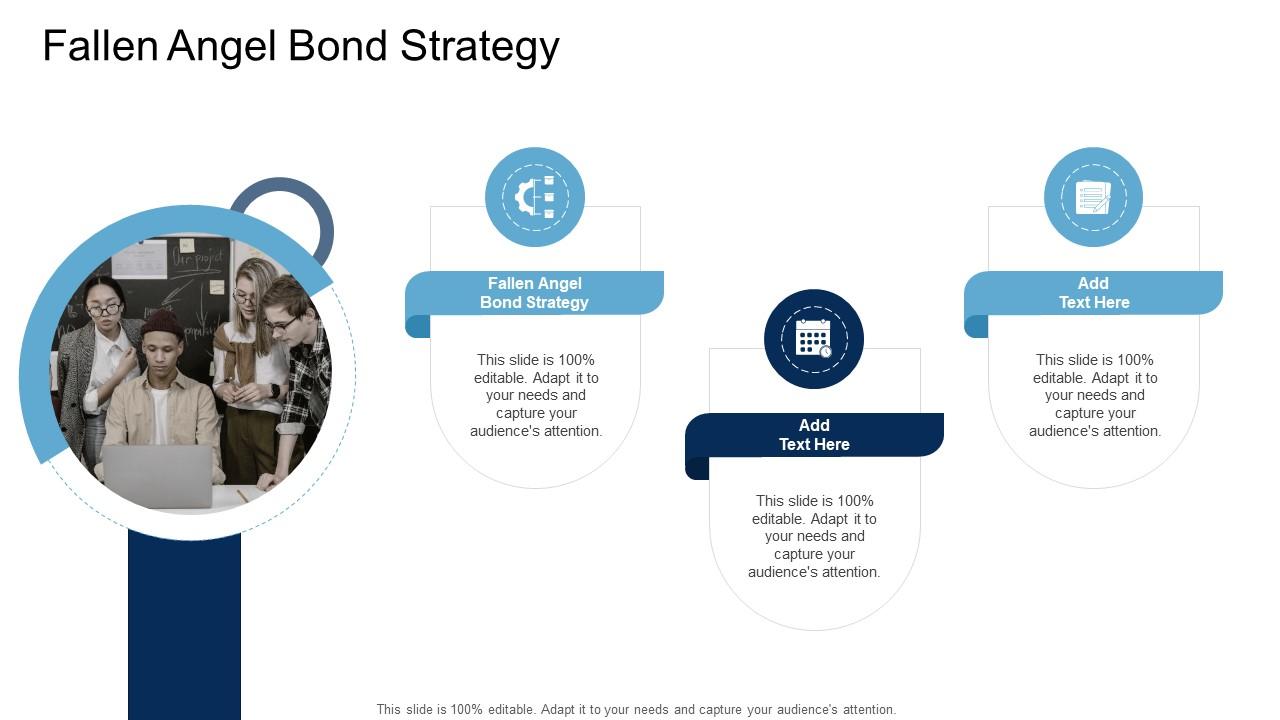

Finance
When Will Insurance Cover A Breast Reduction
Modified: February 21, 2024
Find out if insurance will cover the cost of your breast reduction surgery. Learn about financing options and how to navigate the process.
(Many of the links in this article redirect to a specific reviewed product. Your purchase of these products through affiliate links helps to generate commission for LiveWell, at no extra cost. Learn more)
Table of Contents
- Introduction
- Understanding Breast Reduction Surgery
- The Physical and Emotional Benefits of Breast Reduction
- Insurance Coverage for Breast Reduction: An Overview
- Factors That Determine Insurance Coverage for Breast Reduction
- Medical Necessity Criteria for Insurance Coverage
- Documentation and Pre-authorization Process
- Options for Those Not Covered by Insurance
- Conclusion
Introduction
When it comes to navigating the world of insurance and medical procedures, one question that often arises is whether insurance will cover a breast reduction surgery. Breast reduction surgery, also known as reduction mammaplasty, is a common surgical procedure that aims to remove excess breast tissue and reshape the breasts to a more proportionate and comfortable size.
While breast reduction surgery can provide numerous physical and emotional benefits, the financial aspect can be a concern for many individuals considering the procedure. Understanding the nuances of insurance coverage for breast reduction can help alleviate some of these concerns and provide clarity on what options are available.
In this article, we will delve into the intricacies of insurance coverage for breast reduction surgery. We will explore the physical and emotional benefits of the procedure, discuss the factors that determine insurance coverage, and provide guidance on the documentation and pre-authorization process. Additionally, for those who are not covered by insurance, we will discuss alternative options that may be available.
Whether you are considering breast reduction surgery for medical reasons or personal preference, understanding the possibilities for insurance coverage will help you make informed decisions about your health and well-being. So, let’s dive in and explore the world of insurance coverage for breast reduction surgery.
Understanding Breast Reduction Surgery
Breast reduction surgery, or reduction mammaplasty, is a surgical procedure designed to remove excess breast tissue and reshape the breasts to a more proportionate size. It is typically recommended for individuals who experience physical discomfort and emotional distress due to excessively large breasts.
During the surgery, the surgeon makes incisions in the breast to remove excess glandular tissue, fat, and skin. The nipples are then repositioned to achieve a more balanced and aesthetic appearance. The procedure can also involve reducing the size of the areolas, the darker pigmented skin surrounding the nipples.
Aside from addressing physical discomfort, breast reduction surgery can provide a range of benefits. Many individuals experience relief from chronic back, neck, and shoulder pain that can be caused by the weight and strain of large breasts. The surgery can also improve posture and alleviate issues such as bra strap grooving and difficulty participating in physical activities.
Furthermore, breast reduction surgery can have a significant positive impact on one’s self-esteem and body image. Individuals who undergo the procedure often report feeling more confident, comfortable, and empowered in their bodies. The ability to wear clothes more comfortably and engage in physical activities without limitations can contribute to an improved quality of life.
It’s important to note that breast reduction surgery is a highly individualized procedure. The specific techniques used and the extent of tissue removal will depend on factors such as the individual’s breast size, shape, and desired outcome. A consultation with a board-certified plastic surgeon is crucial for determining the most appropriate approach for each individual case.
The Physical and Emotional Benefits of Breast Reduction
Undergoing a breast reduction surgery can bring about a multitude of physical and emotional benefits. Let’s explore some of these advantages in more detail:
1. Physical Comfort: One of the primary motivations for individuals seeking breast reduction is to alleviate physical discomfort. Large breasts can contribute to chronic pain in the back, neck, and shoulders, as well as cause bra strap grooving and skin irritation. By reducing the size and weight of the breasts, the surgery can provide significant relief from these issues, allowing individuals to lead a more comfortable and pain-free life.
2. Improved Posture: Excessively large breasts can affect posture and balance, leading to an increased risk of spinal misalignment and poor posture. Breast reduction surgery can help to correct these issues and improve overall posture, enabling individuals to stand and move more confidently.
3. Increased Physical Activity: Women with large breasts often find it challenging to participate in physical activities such as running, jogging, or high-intensity workouts. The weight and size of the breasts can cause discomfort, pain, and restriction of movement. By reducing the size of the breasts through surgery, individuals can engage in physical activities more freely and comfortably, promoting a healthier and more active lifestyle.
4. Clothing Choices: Finding clothing that fits well and flatters the body can be a struggle for individuals with large breasts. Many women with disproportionately large breasts find themselves limited to certain styles and sizes of clothing. After breast reduction surgery, individuals have more options when it comes to clothing choices, allowing them to confidently wear a wider range of styles that suit their personal taste and body shape.
5. Enhanced Self-Confidence: The emotional benefits of breast reduction surgery should not be underestimated. Many individuals with large breasts experience self-consciousness, low self-esteem, and body image issues. Breast reduction surgery can help individuals feel more comfortable and confident in their bodies, improving overall self-image and self-worth.
It’s important to note that while breast reduction surgery can provide significant physical and emotional benefits, it is essential to have realistic expectations. Consulting with a qualified plastic surgeon and discussing your goals and expectations can help ensure that the procedure will meet your individual needs and desires.
Insurance Coverage for Breast Reduction: An Overview
When it comes to insurance coverage for breast reduction surgery, it can be a complex and varied landscape. While some insurance plans may cover the procedure to a certain extent, others may consider it a cosmetic procedure and exclude coverage. Understanding the factors that determine insurance coverage is crucial in navigating this process.
Insurance coverage for breast reduction surgery is typically based on the concept of medical necessity. If the surgery is deemed medically necessary to alleviate physical symptoms and improve quality of life, there is a higher likelihood of insurance coverage. However, every insurance plan and policy may have its own specific requirements and criteria for determining medical necessity.
Insurance providers will generally require documentation supporting the medical necessity of the breast reduction surgery. This can involve a detailed medical history, documentation of physical symptoms, and unsuccessful attempts at alternative treatments such as physical therapy or pain management. Additionally, photographs and other imaging may be necessary to assess breast size and proportion.
Furthermore, insurance providers may consider specific criteria to determine the medical necessity of breast reduction surgery. These criteria can include the amount of breast tissue to be removed, the presence of physical symptoms such as persistent pain and discomfort, and the individual’s body mass index (BMI). Meeting these criteria is essential for insurance coverage.
It’s important to note that insurance coverage for breast reduction surgery may also be influenced by the age of the individual. Some insurance plans have age restrictions, requiring individuals to be a certain age (usually 18 or older) to be eligible for coverage. Additionally, insurance providers may require individuals to have attempted nonsurgical treatments for a designated period before considering coverage for surgery.
Prior to undergoing breast reduction surgery, it is crucial to check the specific coverage details outlined in your insurance policy. Contacting your insurance provider directly and speaking to a representative can provide clarity on what is covered and what documentation is necessary. Consulting with a board-certified plastic surgeon who has experience with insurance coverage can also be helpful in navigating the process.
While it can be challenging to navigate insurance coverage for breast reduction, it is not uncommon for individuals to have successful claims and receive coverage. With thorough documentation, a strong case for medical necessity, and an understanding of your insurance policy, you can increase your chances of obtaining insurance coverage for this life-changing procedure.
Factors That Determine Insurance Coverage for Breast Reduction
Insurance coverage for breast reduction surgery is contingent upon several factors that insurance providers consider when assessing the medical necessity of the procedure. Understanding these factors is essential in determining whether your insurance will cover the cost of breast reduction surgery.
1. Severity of Physical Symptoms: Insurance providers typically require documentation of significant physical symptoms caused by excessively large breasts. These symptoms may include chronic back, neck, and shoulder pain, skin irritation, and difficulty engaging in physical activities. The severity and persistence of these symptoms play a crucial role in determining the medical necessity of the surgery.
2. Failed Conservative Treatment: In many cases, insurance companies require evidence that non-surgical treatments for breast-related symptoms have been attempted and proven ineffective. These conservative treatments may include physical therapy, pain management, specialized bras, and weight loss efforts. Demonstrating a sincere effort to alleviate symptoms through alternative means can strengthen the case for insurance coverage.
3. BMI and Breast Size: Insurance coverage may also consider the individual’s body mass index (BMI) and the proportionality of breast size. In some cases, insurance providers have specific guidelines in terms of the amount of breast tissue that needs to be removed relative to body weight and BMI. These guidelines help determine the medical necessity of the surgery based on the impact on overall health and well-being.
4. Psychological Distress: While physical symptoms are a primary consideration, some insurance providers also take into account the psychological distress caused by excessively large breasts. Emotional well-being, self-esteem, and body image dissatisfaction may be factors considered in determining medical necessity. Documentation from mental health professionals or therapists may be required to validate the impact of breast size on the individual’s psychological well-being.
5. Insurance Policy Guidelines: Each insurance provider has specific guidelines and policies regarding breast reduction coverage. It is crucial to review your policy documents to understand the criteria set by your insurance company. These guidelines may include age restrictions, waiting periods, or limitations on the amount of coverage provided. Familiarize yourself with these guidelines to ensure you meet the necessary requirements.
It is important to note that the factors mentioned above may vary among different insurance providers and policies. Contacting your insurance provider directly and discussing your specific circumstances can help you understand their specific requirements and documentation needed for successful coverage.
Consulting with a board-certified plastic surgeon experienced in dealing with insurance coverage for breast reduction can also be beneficial. They can guide you through the process, help gather the necessary documentation, and provide insight into the criteria that insurance providers commonly consider.
By understanding the factors that determine insurance coverage for breast reduction surgery, you can better navigate the process and increase your chances of obtaining the coverage you need for this life-transforming procedure.
Medical Necessity Criteria for Insurance Coverage
Insurance coverage for breast reduction surgery is typically contingent upon meeting specific medical necessity criteria. These criteria vary among insurance providers and policies but generally revolve around the following considerations:
1. Physical Symptoms: Insurance providers require evidence of physical symptoms caused by excessively large breasts. These symptoms may include chronic pain in the back, neck, and shoulders, skin irritation or rashes, bra strap grooving, and difficulty engaging in physical activities. The severity, duration, and impact of these symptoms on daily life are important factors in determining medical necessity.
2. Failed Conservative Treatments: Many insurance providers require documentation of attempts to alleviate symptoms through conservative treatments before considering coverage for breast reduction surgery. These treatments may include physical therapy, pain management techniques, specialized bras, and weight loss efforts. It is essential to demonstrate that these non-surgical options have been pursued without success in order to strengthen the case for medical necessity.
3. Proportionality and BMI: Insurance providers often consider the proportionality of breast size relative to the individual’s body mass index (BMI). They may have specific guidelines regarding the amount of breast tissue that needs to be removed in relation to body weight and BMI. This helps determine the medical necessity of the surgery based on the impact on overall health and well-being.
4. Psychological Distress: In some cases, insurance providers also acknowledge the psychological distress caused by excessively large breasts. Emotional well-being, self-esteem, and body image dissatisfaction may be additional factors considered in determining medical necessity. Documentation from mental health professionals or therapists may be requested to validate the impact of breast size on the individual’s psychological well-being.
5. Insurance Policy Guidelines: Each insurance provider may have specific guidelines outlined in their policies regarding medical necessity for breast reduction surgery. These guidelines may include age restrictions, waiting periods, or limitations on the amount of coverage provided. Reviewing your insurance policy documents will help you understand the specific criteria set by your insurance company.
It is important to note that meeting medical necessity criteria does not guarantee insurance coverage for breast reduction. Each insurance provider has their own unique policies and requirements. It is crucial to thoroughly review your policy and consult with your insurance provider to understand their specific criteria and documentation requirements.
Consulting with a board-certified plastic surgeon who has experience in dealing with insurance coverage for breast reduction can be beneficial during this process. They can help evaluate your individual case, gather the necessary supporting documentation, and provide guidance throughout the insurance coverage process.
By understanding the medical necessity criteria for insurance coverage, you can better navigate the process and present a strong case to your insurance provider for coverage of breast reduction surgery if it is deemed medically necessary in your situation.
Documentation and Pre-authorization Process
The documentation and pre-authorization process for insurance coverage of breast reduction surgery is a crucial step in ensuring the smooth progress of your claim. It involves gathering and submitting the necessary documentation to support the medical necessity of the procedure. Below are some key steps to consider:
1. Consultation and Assessment: Schedule a consultation with a board-certified plastic surgeon experienced in breast reduction surgery. During the consultation, the surgeon will evaluate your individual case, assess your physical symptoms, and discuss your medical history. They will also explain the procedure, potential risks, and anticipated outcomes. This consultation is essential for determining if breast reduction surgery is a suitable option for you.
2. Supporting Documentation: Your surgeon will help gather the necessary documentation to support your insurance claim. This documentation typically includes medical records, photographs of the breasts, documentation of physical symptoms, and evidence of failed conservative treatments. Your surgeon may also write a letter detailing the medical necessity of the procedure based on your specific case.
3. Insurance Verification: Contact your insurance provider to verify coverage for breast reduction surgery. Understand their specific criteria for medical necessity and any pre-authorization requirements. This step will help you determine the extent of coverage, any out-of-pocket expenses, and the process for obtaining pre-authorization.
4. Pre-authorization Process: Pre-authorization is the process of obtaining approval from your insurance company before undergoing the procedure. Your surgeon’s office will typically handle the pre-authorization process on your behalf. They will submit the necessary documentation, including the surgeon’s letter, medical records, and any additional forms required by the insurance provider. The insurance company will review the documentation to determine if the procedure meets their criteria for medical necessity.
5. Follow-up and Confirmation: Stay in contact with your surgeon’s office throughout the pre-authorization process. They will provide updates on the progress of your claim and inform you of any additional documentation or information required by the insurance company. Once pre-authorization is obtained, you will receive confirmation from your insurance provider detailing the approved coverage for the procedure.
It is important to note that the documentation and pre-authorization process can vary depending on your insurance provider and policy. Some insurance companies may have specific forms to be filled out or additional requirements. It is crucial to review your insurance policy documents and follow any instructions provided by your insurance provider to ensure a smooth and successful pre-authorization process.
Working closely with your surgeon, maintaining open communication with your insurance provider, and being proactive in gathering and submitting the necessary documentation will increase the likelihood of a successful insurance claim for breast reduction surgery.
Options for Those Not Covered by Insurance
In some cases, individuals may find that their insurance does not provide coverage for breast reduction surgery. This can be disheartening, but there are alternative options available for those who are not covered by insurance. Here are some potential paths to explore:
1. Financing Options: Many plastic surgery practices offer financing plans to help make the cost of breast reduction surgery more manageable. These plans allow individuals to pay for the procedure over time, spreading out the cost into affordable monthly payments. Consulting with your plastic surgeon’s office can provide information on available financing options and help you choose the one that suits your financial situation.
2. Medical Tourism: Medical tourism, where individuals travel to another country for medical treatment, is a growing option for those seeking affordable healthcare. Some countries offer breast reduction surgeries at a lower cost compared to the United States. However, it is important to thoroughly research and choose a reputable facility and surgeon, ensuring they meet international standards of safety and quality.
3. Out-of-Pocket Expense Planning: If financing or medical tourism is not feasible, saving up for the procedure and paying out-of-pocket may be an option. Create a budget and savings plan that allows you to set aside funds specifically for breast reduction surgery. It may take time, but it can be a way to achieve your desired outcome without insurance coverage.
4. Consider Non-Surgical Alternatives: While breast reduction surgery provides a permanent solution, it is worth exploring non-surgical alternatives that can alleviate some of the discomfort caused by large breasts. These alternatives may include physical therapy, pain management techniques, and specialized bras. Although they may not provide the same level of relief as surgery, they can offer temporary relief while you explore other options.
5. Reevaluate Insurance Coverage: If your insurance currently does not cover breast reduction surgery, it may be worth revisiting your coverage in the future. Circumstances can change, and insurance providers may update their policies to include coverage for the procedure. Keep an eye out for any policy changes or consider switching to a different insurance provider that offers coverage for breast reduction.
It is important to weigh the financial considerations, potential risks, and benefits of each option before making a decision. Consulting with a board-certified plastic surgeon can provide valuable insights and guidance in determining the most suitable course of action for your specific situation.
Remember, while insurance coverage can help alleviate the financial burden, it should not dictate your decision to undergo breast reduction surgery. Explore the available options and choose the path that aligns with your goals, needs, and financial circumstances.
Conclusion
Insurance coverage for breast reduction surgery can be a complex and nuanced topic. Understanding the factors that determine coverage and the documentation required is crucial in navigating the process. While insurance coverage can help alleviate the financial burden, there are alternative options for those who are not covered.
Breast reduction surgery offers numerous physical and emotional benefits, including relief from chronic pain, improved posture, enhanced self-confidence, and increased physical activity. It is a deeply personal decision that can have a profound impact on the quality of life for individuals struggling with excessively large breasts.
If you are considering breast reduction surgery, consult with a board-certified plastic surgeon who has experience in dealing with insurance coverage. They can guide you through the process, determine medical necessity, and assist with the documentation and pre-authorization process.
For those not covered by insurance, financing options, medical tourism, out-of-pocket expense planning, and non-surgical alternatives are potential paths to explore. It is essential to carefully consider the financial implications, risks, and benefits of each option and choose the one that aligns with your needs and circumstances.
Remember that insurance coverage can evolve, so it’s worth revisiting your coverage periodically or considering a change in insurance provider to see if breast reduction surgery is covered in the future.
Ultimately, regardless of insurance coverage, the most important aspect is making an informed decision about what is best for your physical and emotional well-being. Breast reduction surgery can be life-changing, providing relief from physical discomfort and improving self-confidence. By understanding the insurance coverage process and exploring alternative options, you can make a choice that empowers you to live a happier and healthier life.














